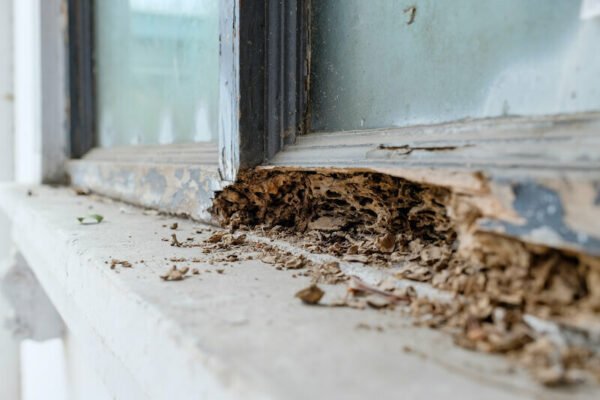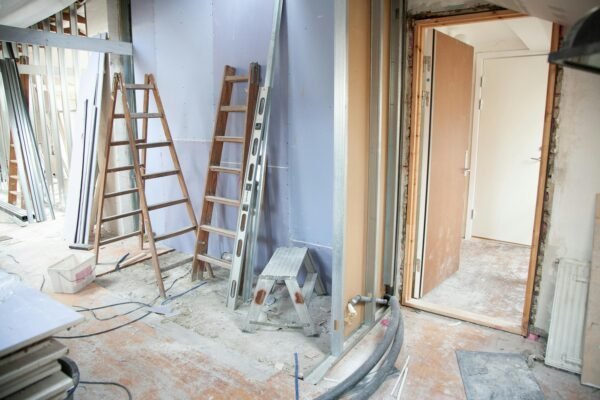
7 Signs of Termite Infestation Every Homeowner Should Know

Termites might be small, but they can create enormous headaches for homeowners. While these silent destroyers work behind the scenes, the damage they cause becomes painfully apparent only after they’ve done significant harm. The key to minimising termite impact? Spotting the signs early. Here are seven telltale indicators that termites may be quietly feasting on your home.
1. Hollow-Sounding Wood
One of the most apparent yet often overlooked signs of termites is hollow-sounding wood. If you tap or knock on wooden surfaces, and they sound unusually hollow or empty, this could indicate termite damage. Termites consume wood from the inside out, leaving behind a thin shell that hides their presence until it’s too late.
If you’re uncertain whether wood sounds hollow, try this: gently tap around door frames, skirting boards, or other wood structures with the back of a screwdriver. A low, hollow sound can suggest termites are at work beneath the surface. While a subtle sign, catching this early can help you act quickly by contacting professionals for termite control Perth before extensive structural damage occurs.
2. Mud Tubes
Mud tubes, also known as shelter tubes, are among the most characteristic signs of a termite presence. These tiny tunnels are typically found along foundation walls, under flooring, or other concealed spaces termites use to travel undetected. Termites construct mud tubes to protect themselves from the outside air, which can dry them out and disrupt their movement.
If you find these mud tunnels around your home, try breaking a small section. If termites are actively using the tunnel, it will usually be rebuilt within a few days. However, even if there are no live termites in the tube, that doesn’t mean you’re termite-free; it might just mean the colony has moved to a new spot.
3. Discarded Wings
When a termite colony matures, winged termites (also known as swarmers or alates) leave the nest to establish new colonies. After finding a suitable location, they shed their wings, often leaving piles of tiny, translucent wings around windowsills, doorways, and other areas near light sources.
Finding discarded wings inside your home should be taken seriously. This means termites have not only been close to your home but are likely trying to start a colony. A pile of wings is a clear warning sign; if you see them, it’s time to investigate.
4. Tight-Fitting Doors and Windows
Believe it or not, termites can cause enough structural movement in wooden frames to affect how doors and windows close. As termites eat through wood, they create a moisture-rich environment that warps and distorts the shape of the frames. This leads to misalignment, making doors and windows difficult to open and close properly.
While weather conditions can also lead to sticking doors and windows, combined with other signs, this can be a potential termite warning. Inspect the frames closely for any additional signs of damage, like fine wood dust, hollow-sounding patches, or visible changes in the wood’s texture. It’s a good idea to use pest control in certain situations to make sure unwanted pests and termites will be removed safely.
5. Frass (Termite Droppings)
Termites, particularly drywood termites, leave behind small, pellet-shaped droppings known as frass. This material is usually the same colour as the wood they’re consuming, making it easy to mistake for sawdust. However, unlike regular dust or dirt, frass piles up in small heaps near the entry points to the termites’ tunnels, typically around wooden beams, skirting boards, or other affected areas.
While seeing frass may be unpleasant, it’s actually one of the clearest indicators of a termite infestation. Regularly inspect areas where wood dust accumulates and pay attention to unusual, small piles of what looks like fine wood granules.
6. Peeling or Bubbling Paint
Peeling or bubbling paint on walls or ceilings is often associated with water damage. However, it can also be a red flag for termites. Subterranean termites, in particular, bring moisture into wood as they tunnel, creating conditions that lead to paint separation from the wall’s surface.
If you notice unusual paint peeling or bubbling without any water leak nearby, it might be time to look a bit closer. Check if there’s wood damage underneath by gently pressing on the area. Termite-damaged wood will usually give way with only slight pressure, a strong indicator of infestation.
7. Noise Inside Walls
While termites aren’t the loudest creatures, some of them—especially soldier termites—make audible tapping or clicking sounds to communicate with each other. These noises can often be heard when they feel threatened or when they’re actively working. At night, when your home is quiet, you may hear faint rustling or clicking sounds from inside walls, floorboards, or other wooden structures.
If you’re hearing strange noises and can’t pinpoint the source, take note. While it might sound like something out of a horror movie, these tiny taps are usually termites signalling their colony. Catching this early can be the difference between a small, manageable repair and significant structural renovation.
A Few Final Thoughts
Termites can wreak havoc if left unchecked, but knowing these signs can help you catch them before they’ve dug too deep. Noticing even one or two of these warning signs should prompt further inspection—it’s much better to catch them in the early stages rather than deal with extensive damage down the line.
Keeping an eye out for these seven indicators will empower you to act quickly if termites show up. Remember, your home is one of your biggest investments; safeguarding it from termites will save you not only money but also a considerable amount of stress. Regular inspections and immediate action are your best defence against these silent invaders.












































